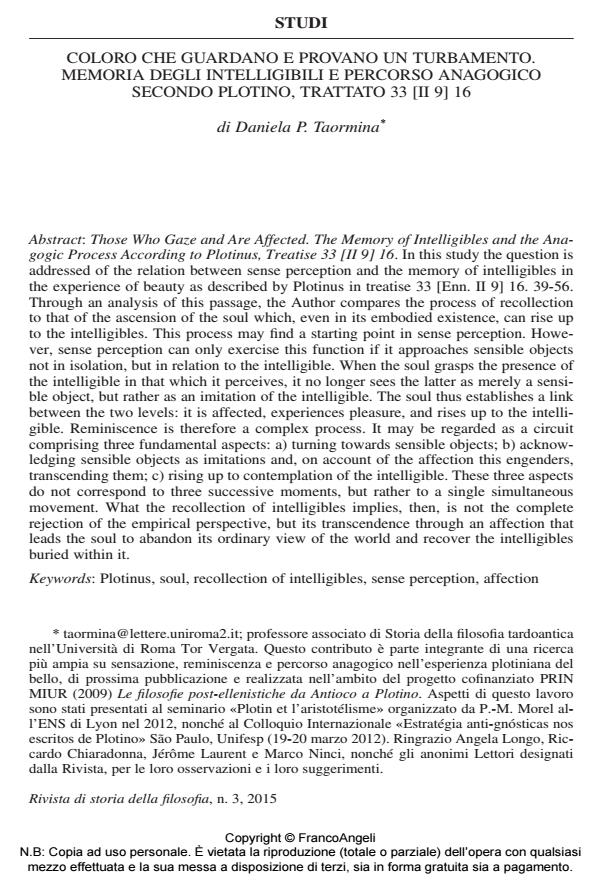Coloro che guardano e provano un turbamento. Memoria degli intelligibili e percorso anagogico secondo plotino, trattato 33 [II 9] 16
Titolo Rivista RIVISTA DI STORIA DELLA FILOSOFIA
Autori/Curatori Daniela P. Taormina
Anno di pubblicazione 2015 Fascicolo 2015/3
Lingua Italiano Numero pagine 14 P. 495-508 Dimensione file 577 KB
DOI 10.3280/SF2015-003001
Il DOI è il codice a barre della proprietà intellettuale: per saperne di più
clicca qui
Qui sotto puoi vedere in anteprima la prima pagina di questo articolo.
Se questo articolo ti interessa, lo puoi acquistare (e scaricare in formato pdf) seguendo le facili indicazioni per acquistare il download credit. Acquista Download Credits per scaricare questo Articolo in formato PDF

FrancoAngeli è membro della Publishers International Linking Association, Inc (PILA)associazione indipendente e non profit per facilitare (attraverso i servizi tecnologici implementati da CrossRef.org) l’accesso degli studiosi ai contenuti digitali nelle pubblicazioni professionali e scientifiche
In this study the question is addressed of the relation between sense perception and the memory of intelligibles in the experience of beauty as described by Plotinus in treatise 33 [Enn. II 9] 16. 39-56. Through an analysis of this passage, the Author compares the process of recollection to that of the ascension of the soul which, even in its embodied existence, can rise up to the intelligibles. This process may find a starting point in sense perception. However, sense perception can only exercise this function if it approaches sensible objects not in isolation, but in relation to the intelligible. When the soul grasps the presence of the intelligible in that which it perceives, it no longer sees the latter as merely a sensible object, but rather as an imitation of the intelligible. The soul thus establishes a link between the two levels: it is affected, experiences pleasure, and rises up to the intelligible. Reminiscence is therefore a complex process. It may be regarded as a circuit comprising three fundamental aspects: a) turning towards sensible objects; b) acknowledging sensible objects as imitations and, on account of the affection this engenders, transcending them; c) rising up to contemplation of the intelligible. These three aspects do not correspond to three successive moments, but rather to a single simultaneous movement. What the recollection of intelligibles implies, then, is not the complete rejection of the empirical perspective, but its transcendence through an affection that leads the soul to abandon its ordinary view of the world and recover the intelligibles buried within it.
Parole chiave:Plotinus, soul, recollection of intelligibles, sense perception, affection
Daniela P. Taormina, Coloro che guardano e provano un turbamento. Memoria degli intelligibili e percorso anagogico secondo plotino, trattato 33 [II 9] 16 in "RIVISTA DI STORIA DELLA FILOSOFIA" 3/2015, pp 495-508, DOI: 10.3280/SF2015-003001